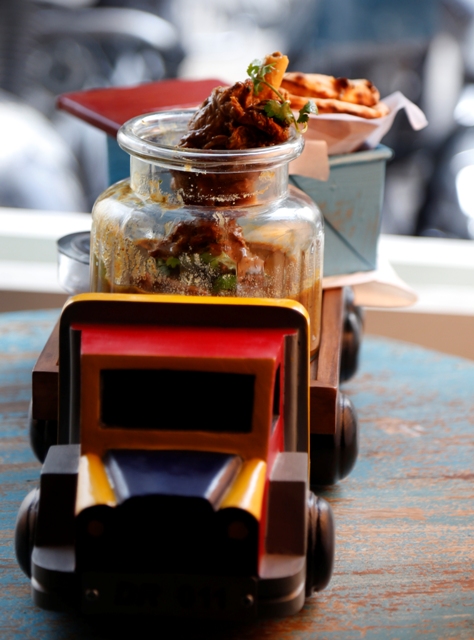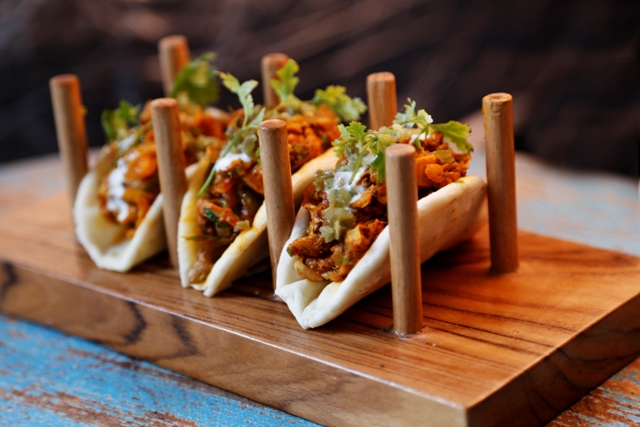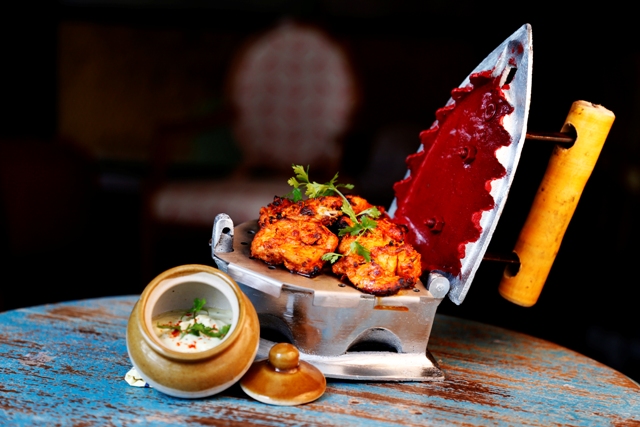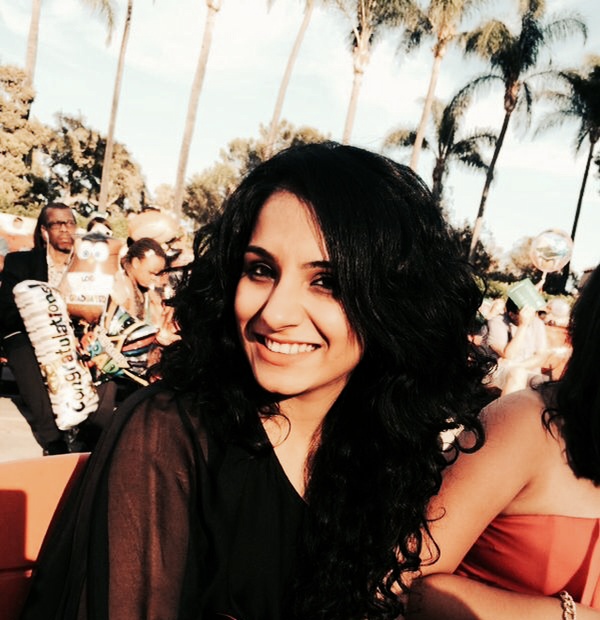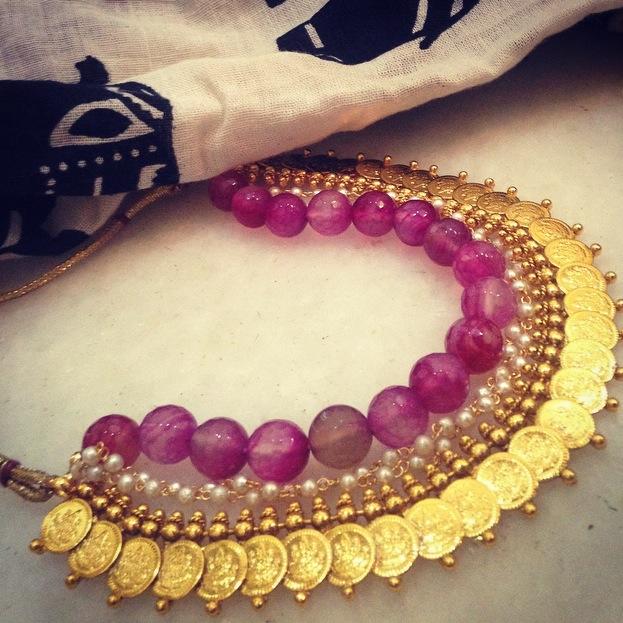Décor: Desi Roots, a brand new café nestled in Saket, New Delhi is one of the very few restaurants that brought back fond memories of childhood in mind, as I walked in for lunch on a balmy Sunday afternoon. The first instinct was a happy feeling—colours like warm orange, dull beige, bright turquoise, royal violet and more popped out from different corners only to make you feel like you have stepped into a cheerful space. This restaurant has taken ‘quirky’ to a whole new level; the décor proudly flaunts pieces like—a sewing machine turned into a table, almost-vintage Bajaj scooter headlights acting as lamps and more.
Also, the chosen interior had strikingly contrasting aesthetics; for instance, a royal chair with bright cherry colour was spotted accompanying a super quirky teapot printed chair. The bar area was mostly radiating pop-culture vibes; vintage posters with an amazing sense of humor was placed on walls facing the arena. My favourite poster was of an Indian lady, precisely from the sixties, sitting with a newspaper in her hand, clad in the most traditional way and waiting to sip some beer from a mug kept in front of her; now this is called ‘chilling like a villain’!
Food: The menu captures essences from regional kitchens across the country. This restaurant is on an expedition to revive those long lost desi elements through their food. I ordered quite a few number of dishes from the menu and absolutely traditional ones at that—but I was taken to surprise by the way good-old food was contemporized. Presentation gets full points here and the best part is that the character of the food remained unaltered. Today’s foodie looks for international gastronomical features in every dish that they dig into. Be it a simple Galouti Kebab or a Soda Shikanji—modern way of presenting mouth-watering food has become a major criteria. However, you are not allowed to compromise on the joy your taste buds used to experience when you ate the same dish in its most traditional avatar.
I started with the Kasaundi Fish Tikka with Babloo Sauce; delicious, succulent and mildly spicy, these fish cubes were an instant hit. Thereafter, I rejoiced upon some Kulle Chaat—an Old Delhi speciality made with watermelons, boiled potatoes, cucumbers, pomegranates and some secret black masala. Post this, we savoured upon some warm lamb Galawati Pate—this was my favourite starter. Super soft, almost-melting, warm kebab served in a small glass jar was definitely a first. The taste reminded me of lanes from Lucknow, where kebabs are the order of the day and the presentation was simple yet so innovative. For the main course, I started with the traditional Daal Baati Choorma with methaniya chilli salsa. This was followed by Mutton Kuttu with Malabari Poronta and Onion Pachdi—once again a delicious dish. The best part was that, this rich looking curry was not overtly oily; it had a diverse flavour thrown in by a gamut of regional spices. Finally, the last main course comprised of Ambala Cantt Mutton Curry with Tikone Parathe and Kumquat Achaar—it had the perfect desi tadka to it combined with carefully balanced spices and modern culinary practices. I loved every bit of it.
Finally, the dessert comprised of Cream Cheese Boondi Brownies and Jamaluddin Ki Kheer from Badal Beg Masjid, Old Delhi. What a delight it was. The first dessert came in a closed glass jar—soft chocolate brownie, warm and moist was blended with cream cheese and boondi; this is perhaps the best example of modern culinary concurrence. And the later made me feel like I had died and gone to dessert heaven. There couldn’t have been a better ending. So foodies and restaurant junkies please visit this place with your friends and family because the food is great, presentation even better and as they say it ‘celebration’ is their middle name!


